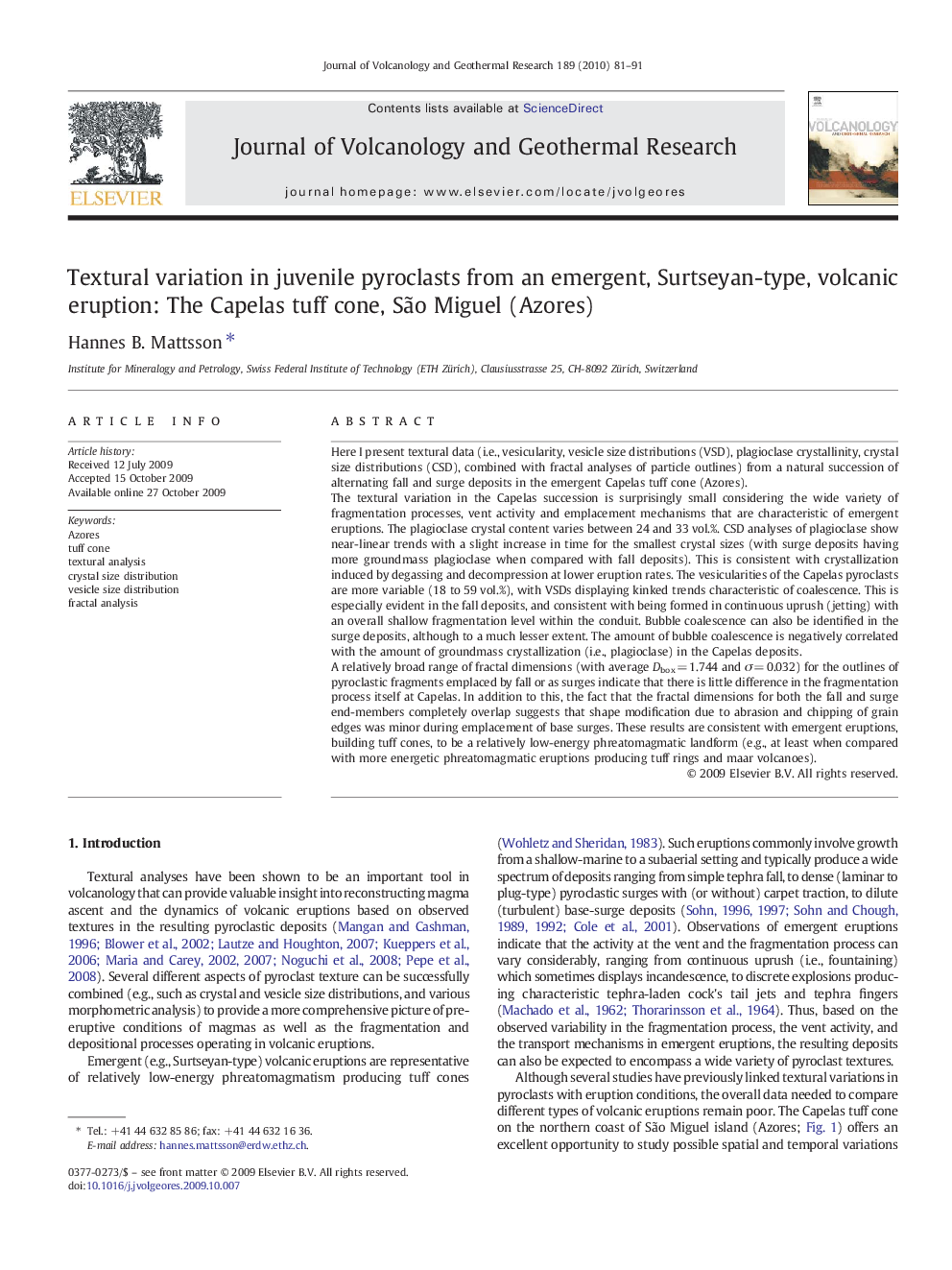| Article ID | Journal | Published Year | Pages | File Type |
|---|---|---|---|---|
| 4715180 | Journal of Volcanology and Geothermal Research | 2010 | 11 Pages |
Here I present textural data (i.e., vesicularity, vesicle size distributions (VSD), plagioclase crystallinity, crystal size distributions (CSD), combined with fractal analyses of particle outlines) from a natural succession of alternating fall and surge deposits in the emergent Capelas tuff cone (Azores).The textural variation in the Capelas succession is surprisingly small considering the wide variety of fragmentation processes, vent activity and emplacement mechanisms that are characteristic of emergent eruptions. The plagioclase crystal content varies between 24 and 33 vol.%. CSD analyses of plagioclase show near-linear trends with a slight increase in time for the smallest crystal sizes (with surge deposits having more groundmass plagioclase when compared with fall deposits). This is consistent with crystallization induced by degassing and decompression at lower eruption rates. The vesicularities of the Capelas pyroclasts are more variable (18 to 59 vol.%), with VSDs displaying kinked trends characteristic of coalescence. This is especially evident in the fall deposits, and consistent with being formed in continuous uprush (jetting) with an overall shallow fragmentation level within the conduit. Bubble coalescence can also be identified in the surge deposits, although to a much lesser extent. The amount of bubble coalescence is negatively correlated with the amount of groundmass crystallization (i.e., plagioclase) in the Capelas deposits.A relatively broad range of fractal dimensions (with average Dbox = 1.744 and σ = 0.032) for the outlines of pyroclastic fragments emplaced by fall or as surges indicate that there is little difference in the fragmentation process itself at Capelas. In addition to this, the fact that the fractal dimensions for both the fall and surge end-members completely overlap suggests that shape modification due to abrasion and chipping of grain edges was minor during emplacement of base surges. These results are consistent with emergent eruptions, building tuff cones, to be a relatively low-energy phreatomagmatic landform (e.g., at least when compared with more energetic phreatomagmatic eruptions producing tuff rings and maar volcanoes).
